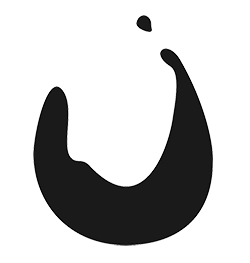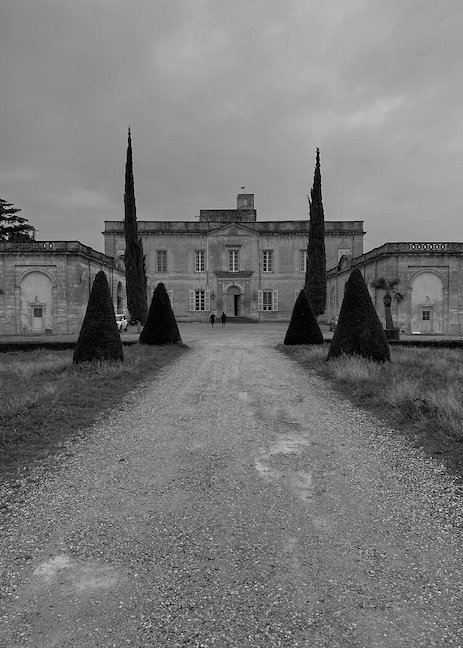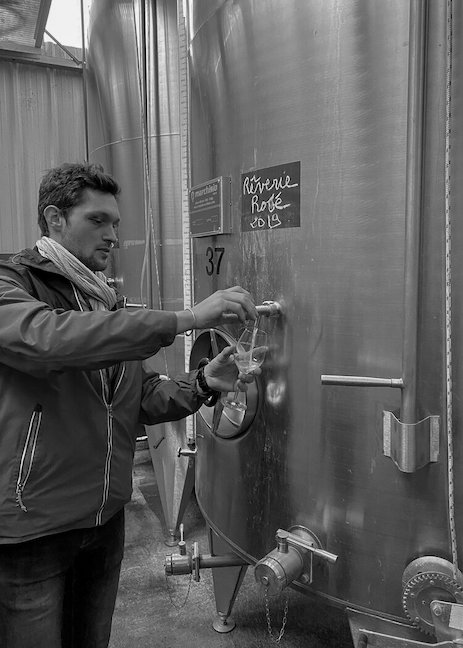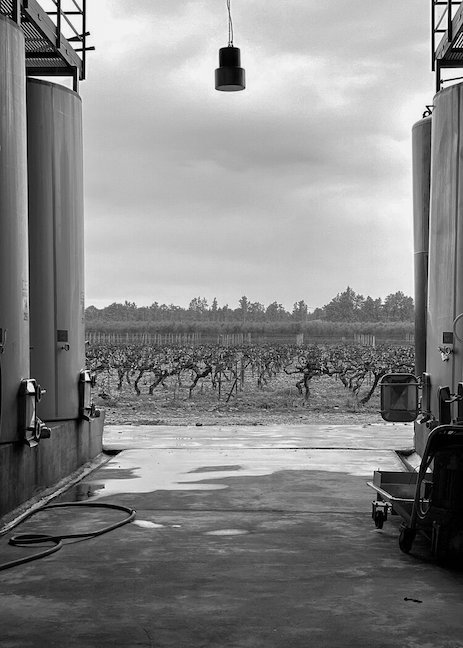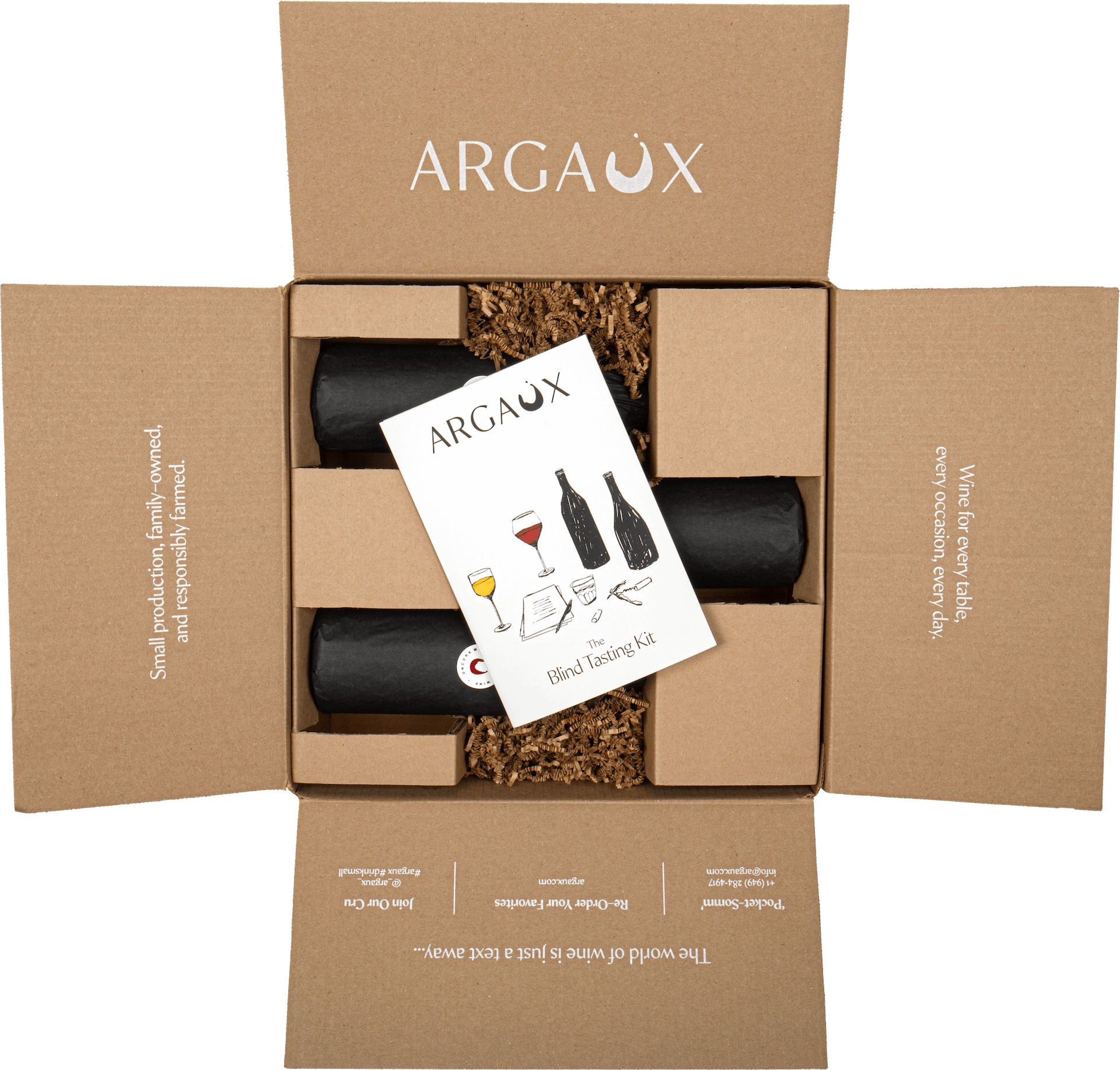2021 Chateau de Montfrin ‘Paumiste’ Rosé
The official pickleball/tennis wine is back and better than ever. This classic French rosé is dry and crisp; it makes for the perfect afternoon refresher whether you’re BBQing with friends, lounging poolside, or of course, refueling courtside.
This rosé is made from organically-farmed vineyards in the village of Montfrin, 12 miles SW of Avignon, in between the Southern Rhône and the Languedoc.
- Tasting Notes pomegranate, strawberries, white peach, grapefruit, herbs de provence, seashell
- Variety 60% Syrah, 40% Carignan
- Region France, Rhone Valley
- Volume 750ml
- Alcohol Volume 12.5%
- Table Talk Jeu de Paume, also known as the “palm game,” was first played by French monks during the medieval times. This game made its way back to England and soon became known as “the sport of kings” with nobility across Europe building salles de jeu de paumes in their summer chateaus. These trendsetting palm players were referred to as 'Paumistes.'
$18.00
Out of stock
Château de Montfrin | Rhône Valley, France
The Paumiste rosé is blended exclusively for Argaux by Benjamin Beguin and Aurore de Fleurieu from organically-farmed, estate vineyards in Montfrin.
In January of 2019, Lexi and Margaux had the opportunity to visit this new producer we were considering working with. Following a few days in Burgundy, they headed down to the Southern Rhone Valley with one of our partners, Paris Wine Company. Following a tour of the Domaine des Captives (vineyards and winery) and Moulin des Ombres (olive orchard and mill), we arrived at Château de Montfrin. The Château has been an important site for centuries, and played host to travelers and statesmen including Saint Francis of Assisi, Saint-Louis, Louis XIII, and Molière. Aurore’s father, Jean-René greeted us at the door with a bottle of Ruinart Champagne and we spent the afternoon eating truffle pasta, tasting wine, and hearing his story. A true renaissance man, Jean-René makes films, owned an art gallery in Paris and co-founded the well-known Paris fashion brand, Agnes B. He also has a wooly mammoth skeleton in his tank room.
In 1993, Jean-René planted his vineyards with the goal of creating local jobs and making delicious, affordable, organic wines. So when we wanted we wanted to make an affordable, organically farmed, & clean rosé to pair with a day on (or off) the court, we knew he was the right partner for this project. Jeu de Paume, also known as the “palm game,” was first played by French monks during the medieval times. This game, which gave way to every modern-day racket sport was originally a ball and court game played with the palm of one’s hands. The palm game made its way back to England and soon became known as “the sport of kings” with nobility across Europe participating and building salles de jeu de paumes in their summer châteaus and noble residences. These trendsetting palm players were referred to as ‘Paumistes,’ and so we found our name.
The label was designed by Leslie Randall, a vintage stylist, illustrator, & textile designer. Leslie spent almost a decade in New York designing for Oscar de La Renta and Kate Spade New York. We knew she would design a label that was perfectly playful, chic and sophisticated. Read more about Leslie and creation of the Paumiste label HERE
THE RHONE VALLEY
For ease of describing the Rhône Valley, we will associate the region by two distinct areas: The Northern Rhône and the Southern Rhône. The Northern Rhône, follows the River Rhône essentially from Vienne in the north down to Valence in the south. Many of their vineyards are planted on slopes situated next to the river as the valley is quite narrow and steep. There is a cold strong wind in this area, called the mistral, which can quickly damage the vines, so the valley serves as protection. The black grape variety, Syrah, dominates in the Northern Rhône. In fact, in many of the smaller appellations and crus, it is the only black grape variety allowed and produced. These wines tend to be a deep color and boast bold black fruit flavors with black pepper and florals. There are a few areas that allow for production of the white grape varieties: Viognier, Marsanne and Roussanne. Particularly, Condrieu and Château-Grillet appellations have a reputation for high-quality Viognier. The noteworthy crus of Northern Rhône for red wine include (but not limited to) Côte-Rôtie, Saint-Joseph, Hermitage, Crozes-Hermitage, and Cornas. To the south and closer to the Mediterranean Sea lies the much larger region of the Southern Rhône. With greater vineyard areas, the Southern Rhône is focused on predominantly red wine, but showcasing a vast range of red, white, and rosé wines from high-quality to inexpensive. Here the climate is considerably more warmer than in the north and the vineyards are on flatter terrain. The mistral winds are still of concern, so many of the vines are trained low to the ground for protection. To absorb some of the heat, many of the best vineyard sites have very stony soils. Particularly, in Châteauneuf-du-Pape, the stones (or galets) are large and completely cover the soil surface. Black grape varieties Grenache, Syrah, Mourvèdre, and Cinsault do best in this warm, sunny climate. Hence why you often see the term “GSM” Blend (meaning Grenache, Syrah, Mourvèdre) coined from this region, which many other regions have now adopted and use for their blends using these grape varietals. While white grape varieties are a minority to this region, Viognier, Marsanne, Roussanne, Clairette, Grenache Blanc, and Bourboulenc are grown here. Notable cru areas are Tavel, Lirac, Gigondas, Vacqueyras, and the infamous, Châteauneuf-du-Pape. Generic appellations of Côte du Rhône and Côte du Rhône Villages account for more than half of the entire production with the Southern Rhône, but don’t let the generic term fool you; These appellations, although not cru status, are also putting out some spectacular quality wines!
HEAD TO OUR BLOG TO LEARN MORE ABOUT HOW ROSE IS MADE AND WHEN TO DRINK IT.
